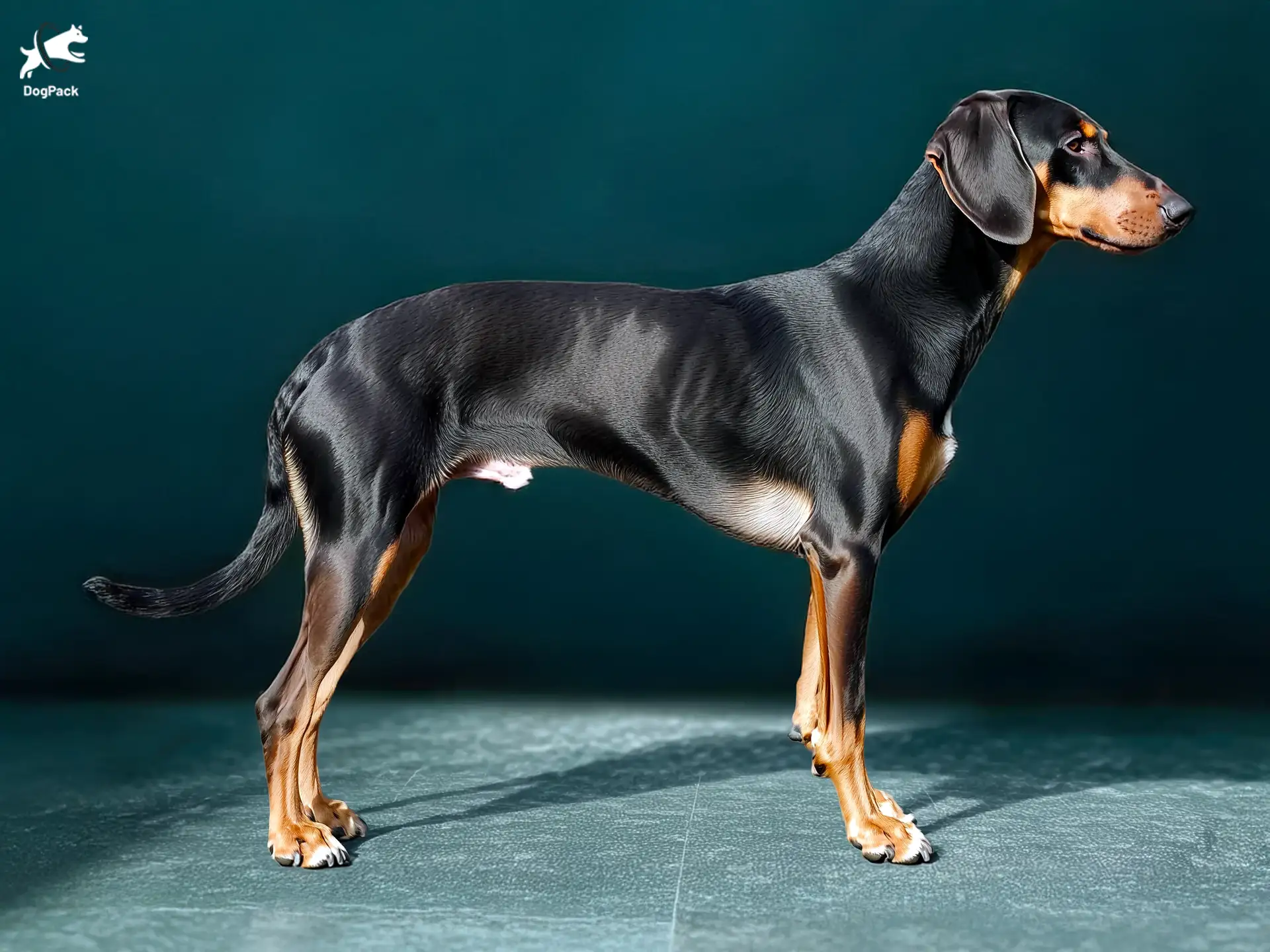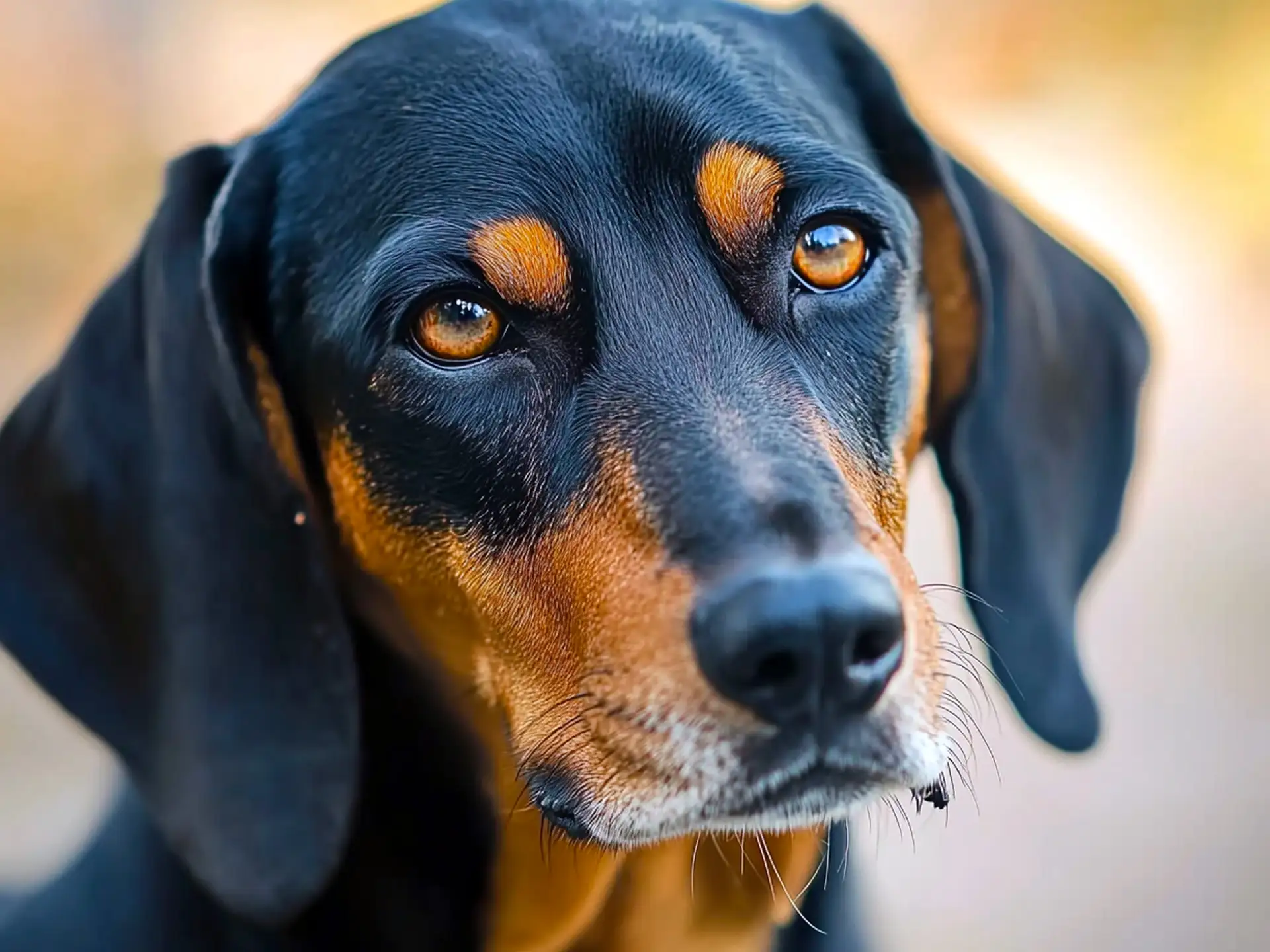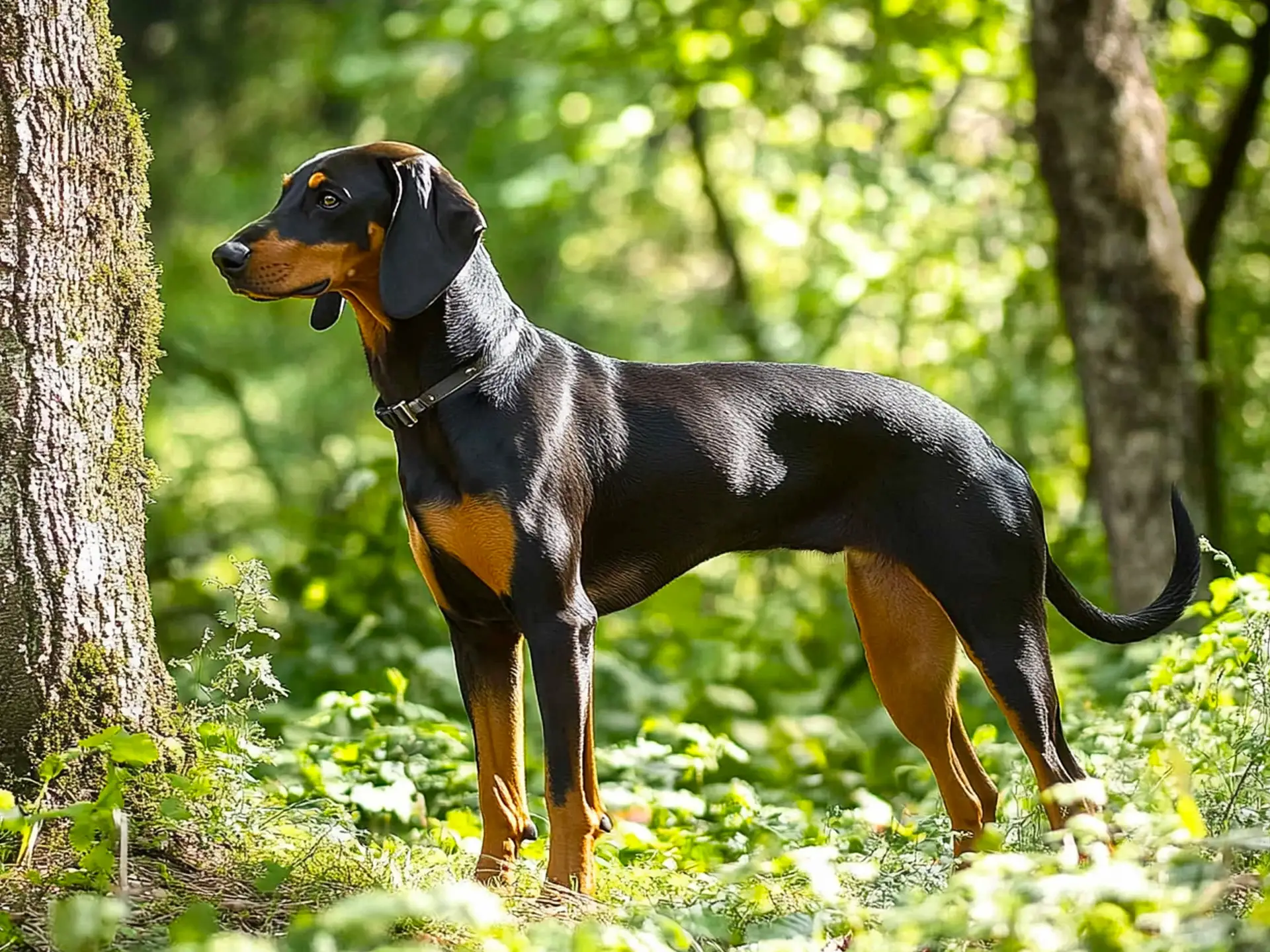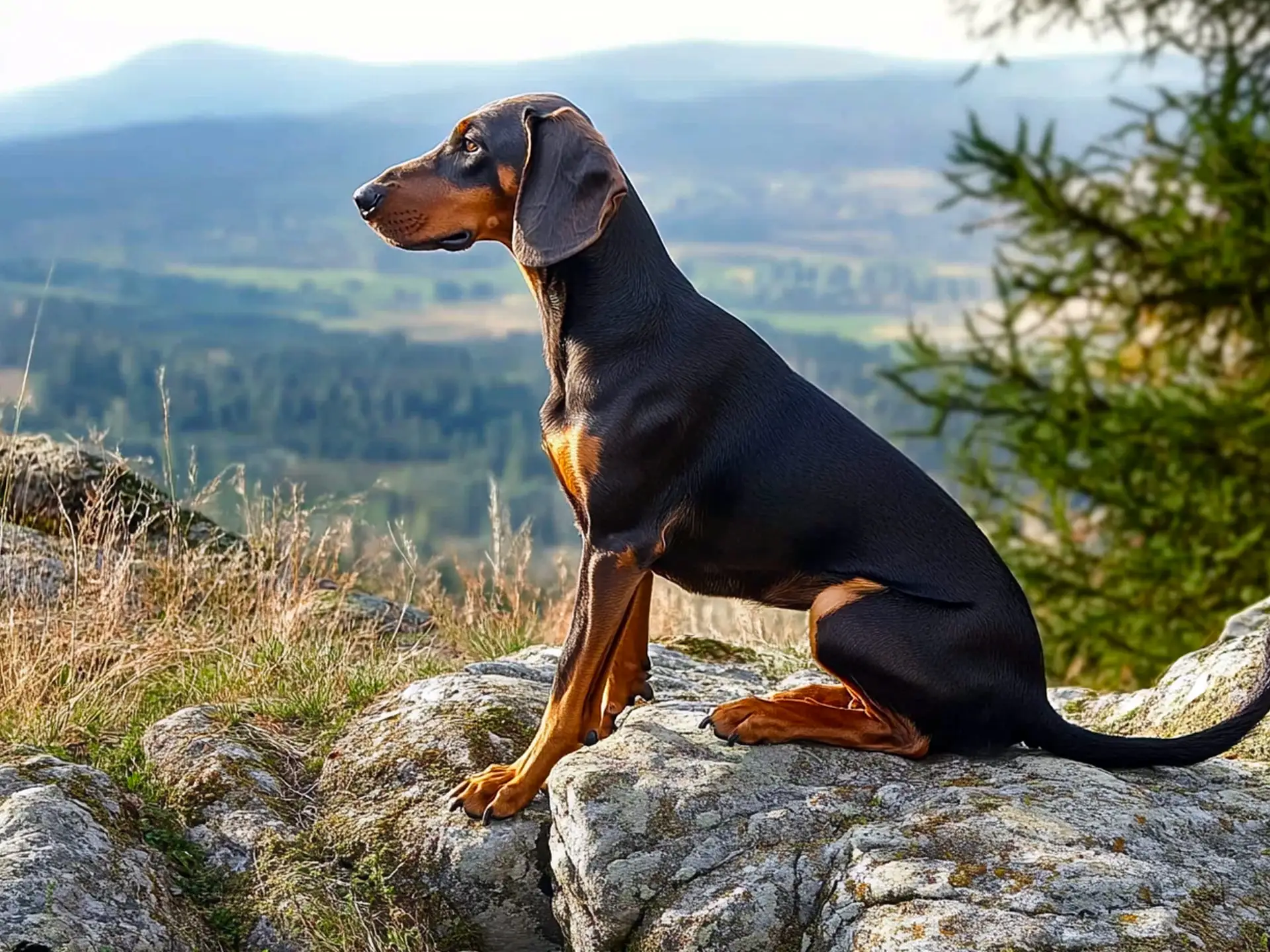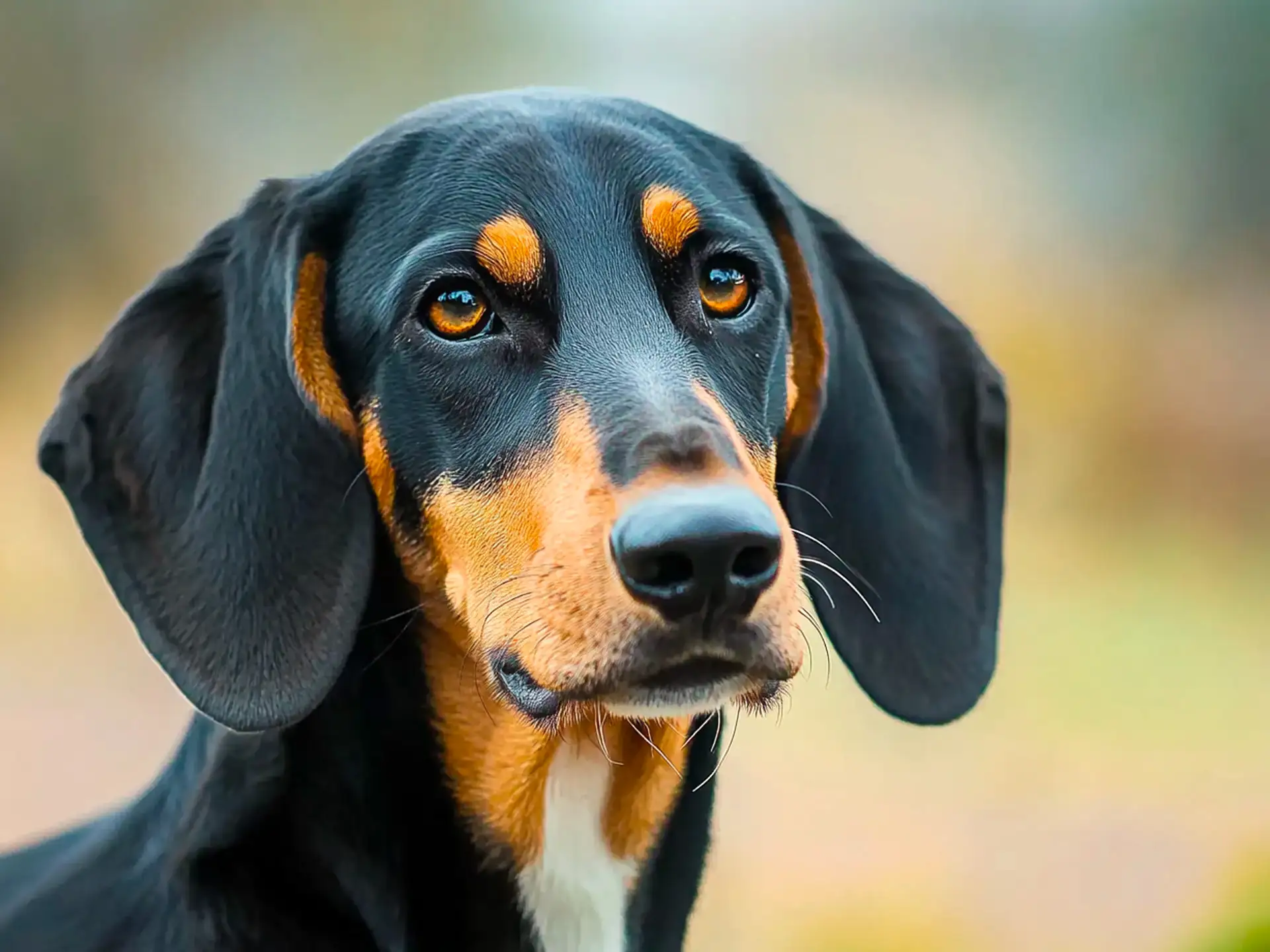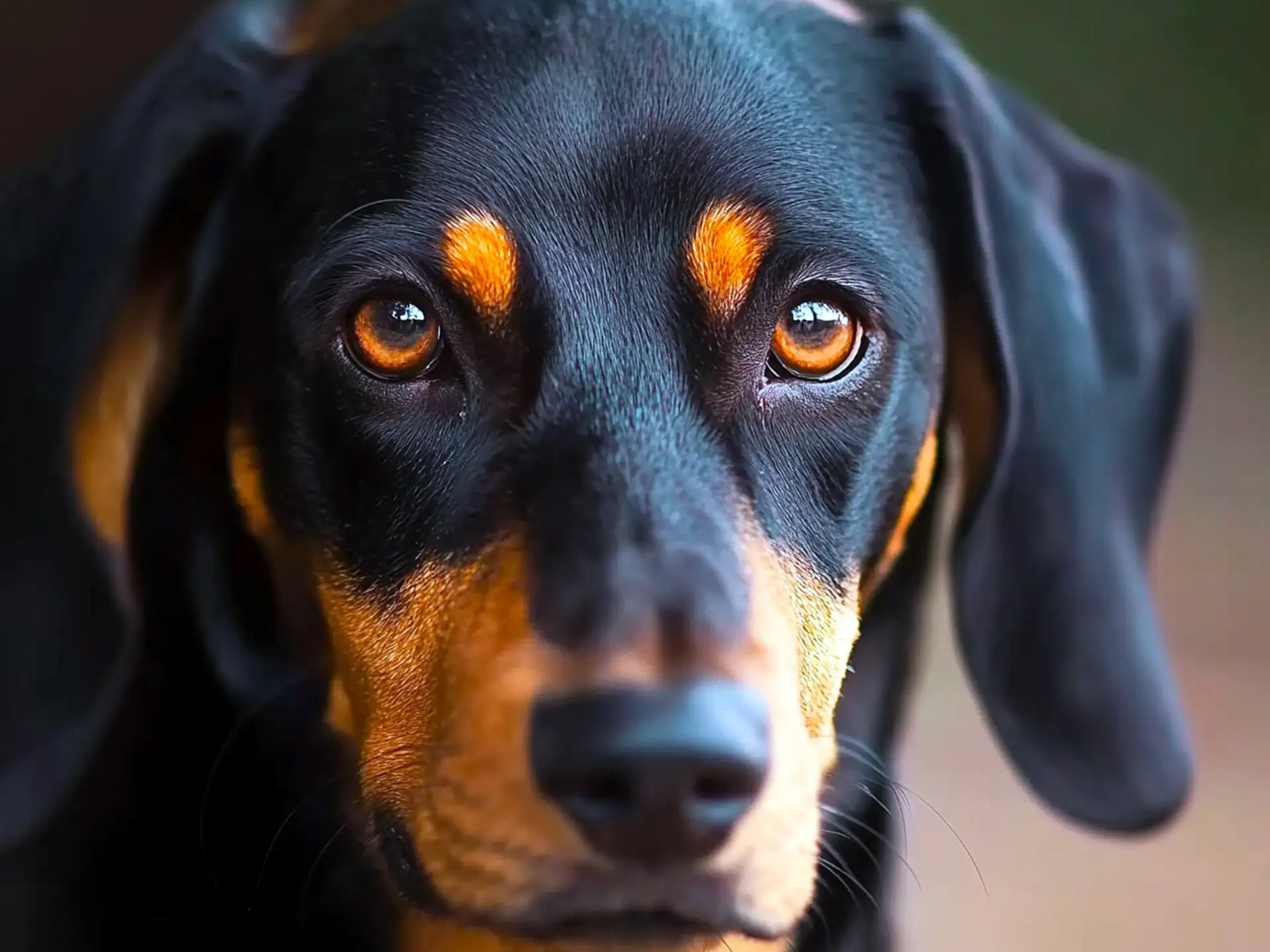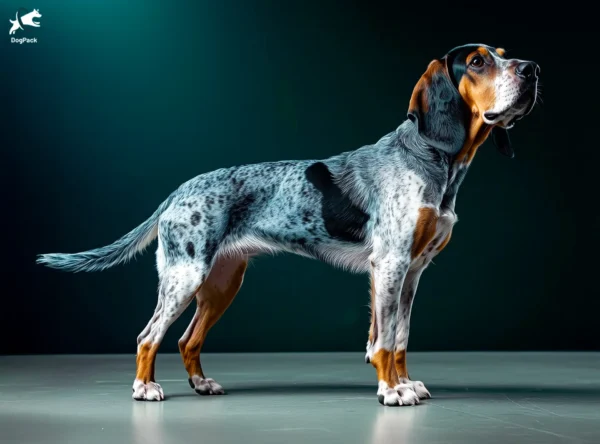Transylvanian Hound Dog Breed Info & Overview
Known for its remarkable hunting instincts and regal presence, the Transylvanian Hound has captivated dog enthusiasts for centuries. Renowned in its homeland for courage and endurance, this agile canine combines an inquisitive nose with an affectionate spirit. Whether working in rugged terrain or snuggling at home, it’s a breed that truly leaves a lasting impression.
Characteristics
Pictures
Breed History
The roots of this breed trace back to Hungary’s medieval nobility, who prized these dogs for their keen sense of smell and fearless pursuit of game in thick forests. Over centuries, they honed their hunting prowess, tracking boar, deer, and even bears. Despite challenges during various historical upheavals, these skilled hounds persisted, eventually becoming a symbol of tenacity in Transylvania.
Some say the Transylvanian Hound’s name originated from the mountainous Transylvanian region where they roamed alongside royalty and peasants alike. During times of conflict, their numbers dwindled, but dedicated breeders fought to preserve their lineage. This scenthound’s adaptable nature helped it survive across changing landscapes—ranging from castle grounds to rustic farmland—and maintain its status as a valuable hunting companion.
Local legends even recount how the breed’s unwavering loyalty protected families from both wild animals and intruders. Over time, enthusiasts formalized breeding programs to safeguard the Transylvanian Hound’s unique traits. Today, its ancestry remains evident in its athletic physique and resolute temperament. Though still relatively rare outside Eastern Europe, interest in this noble canine continues to grow worldwide.
Temperament, Personality
If you’re looking for a friend who’s always up for an adventure, this might be your perfect match. Confident yet deeply loyal, these dogs often form strong bonds with their families. Though the Transylvanian Hound can be strong-willed, patient guidance and regular mental challenges keep it content. Expect a dog that greets each morning with eagerness, ready to sniff out new possibilities.
Despite its courageous hunting background, this breed is surprisingly affectionate at home. It relishes human interaction, often leaning into your legs for extra petting sessions. Those big, soulful eyes aren’t just for show—they watch over family members with protective devotion. With consistent socialization, the Transylvanian Hound becomes a reliable companion who can handle visits from friends and the occasional neighborhood dog playdate.
However, a stubborn streak emerges if it senses uncertain leadership. This hound thrives on structure, so establishing routines and house rules early prevents mischief. Provide them an outlet for their curious noses, or they’ll happily concoct their own scavenger hunts indoors. Their playful side also shines, especially when they’re frolicking outside, chasing toys, or enjoying a good game of hide-and-seek with the kids.
Physical Characteristics
Powerful yet graceful, this breed stands out with a sleek, muscular frame built for endurance. Their coat is short, dense, and typically black with distinct tan markings on the muzzle, chest, and legs. The Transylvanian Hound carries itself proudly, chest out, tail held at a jaunty angle. Their well-proportioned stature allows them to navigate challenging terrain while remaining nimble and swift.
A closer look reveals droopy ears that frame a kind, alert expression. Their almond-shaped eyes often have a watchful gleam—hinting at the breed’s natural instinct to survey its surroundings. Although robust in appearance, they have an athletic agility reminiscent of other large dog breeds. You’ll notice how comfortably they switch between marathon-like endurance and playful bursts of speed.
Legs are long and sturdy, equipped with well-developed muscles suitable for mountainous and forested terrain. The Transylvanian Hound’s deep chest houses powerful lungs, essential for long hunts and intense physical tasks. Thanks to these features, you might be surprised how quickly they can scale hills or trek through dense woods. When it comes to silhouette, their balanced proportions exude both elegance and resilience.
Health Issues
While these dogs typically enjoy robust health, like all purebreds, they can be prone to certain genetic concerns. Hip dysplasia is one of the more common ailments, so it’s important to schedule regular orthopedic checkups. Early detection and proper care can help maintain mobility into their golden years. Providing them with a balanced diet and controlled exercise routines also plays a significant role.
Some Transylvanian Hounds may experience ear infections, due to their floppy ear shape which can trap moisture. Regular ear cleanings help prevent bacterial or yeast buildup. Because they are highly active, sprains or minor injuries from rough terrain can also occur. Observing your dog’s gait and behavior, and consulting a vet when anything seems off, can head off bigger problems down the line.
Comprehensive annual vet checkups often include blood tests, dental exams, and heart evaluations. They also benefit from breed-specific screenings recommended by reputable canine health organizations. Maintaining a healthy weight is crucial too: extra pounds can strain joints and lead to other complications. By being proactive and informed, owners can keep this noble scenthound happy, healthy, and bounding across landscapes for many years.
Grooming Needs
Despite a sleek coat, the Transylvanian Hound still requires regular upkeep to look and feel its best. A weekly brush-down with a soft-bristled brush can remove loose hairs and stimulate natural oils. Keep an eye out for dirt or debris clinging to their short coat, especially if they’ve been romping through muddy fields or dense undergrowth during a hunting expedition.
Baths are needed only occasionally, generally every couple of months or when they’re notably dirty. Over-bathing may strip their skin’s protective oils, leading to dryness. Ears should be gently wiped clean, and nails trimmed to prevent discomfort. Although not as high-maintenance as some rare dog breeds, a little grooming effort goes a long way in keeping them comfortable.
Daily teeth brushing—or at least several times a week—helps ward off dental diseases that active breeds can develop if oral hygiene is neglected. A quick body check after intense play or hikes helps you spot any ticks or minor injuries. Overall, grooming is a wonderful time to bond, as this hound often leans in for extra pats and scratches whenever you bring out the brush.
Exercise Requirements
Prepare to put on your running shoes—this is a dog that thrives on extensive physical activity. An hour or two each day of brisk walks, jogs, or exploration is a must. A bored Transylvanian Hound might decide your living room couch is the perfect chew toy substitute for a forest floor. Their natural hunting drive craves challenging terrain and new scents to keep them happy.
If you have a sizable yard, ensure it’s securely fenced because these athletic adventurers may roam if they catch an intriguing scent. They excel in dog sports like tracking or scent work, channeling their instincts into structured play. Joining a local hound group could also offer supervised outings where they can socialize and practice specialized tasks under experienced guidance.
Short mental workouts are just as vital. Puzzle feeders, scent games, and even hide-and-seek in the yard keep their minds engaged. Mixing up your daily routine prevents monotony—think hiking on different trails or introducing agility exercises. Remember, a tired hound is a happy hound. Proper exercise not only keeps them physically fit but also curbs unwanted behaviors that can arise from restlessness.
Training Tips
When training this breed, consistency and patience are your best allies. They’re intelligent and quick to learn, but might test boundaries if they sense you’re unsure. Positive reinforcement with treats or verbal praise typically works better than stern reprimands. If they wander off mid-session to investigate a smell, redirect them kindly but firmly to maintain focus.
Early socialization is crucial for the Transylvanian Hound’s development—introduce them to various people, places, and sounds. This ensures they remain calm and collected in different environments. If you’re new to hound ownership, consider enrolling in a reputable obedience class. This environment helps your dog learn commands while also providing a safe space to interact with other large dog breeds.
Patience pays off big time. Break down commands into small, manageable steps. Keep sessions short, ending on a positive note to encourage progress. Stubborn moments may occur, but a gentle yet confident approach keeps them motivated. Over time, you’ll find your hound responding eagerly—especially when there’s a treat on the line. Celebrate every victory, no matter how small, to build a strong training bond.
Nutrition, Diet
Transylvanian Hounds burn through calories quickly, so a high-quality, protein-rich kibble is essential. Aim for a diet with at least 25% protein from sources like chicken, lamb, or fish. During peak activity periods—such as hunting season or vigorous sports—slightly higher protein and fat content can help sustain their energy levels. Low-quality fillers can lead to digestive issues or lackluster performance.
Most adult hounds thrive on two meals a day, totaling about 3 to 3.5 cups of food, though exact portions depend on size and activity level. A particularly active dog might need up to 4 cups. Monitoring body condition is key: you should feel ribs under a light layer of muscle. Adjust portions if they appear underweight or start to pack on extra pounds.
Adding lean meats or fish-based broths can spice up their meals without overloading calories. For dogs frequently engaged in intense hunts, consider special performance diets formulated to support joint health with added glucosamine. Stay vigilant about any potential allergies by introducing new foods gradually and watching for adverse reactions. Ultimately, a well-rounded meal plan keeps them fueled, focused, and ready for every adventure.
Adoption, Breeders
If you’re seeking a Transylvanian Hound, connect with dedicated breeders who perform health screenings like hip and elbow evaluations. An ethical breeder will be transparent about their lines’ genetic history and eager to share information about the pup’s parents. Avoid impulse buys—take time to meet the dogs, ask questions, and ensure the environment is clean and nurturing.
Adoption is another fantastic avenue. Because this breed is rare, you might have to search beyond your local shelter. Check specialized rescue organizations or breed-specific groups online. Engaging with an active owner community can be incredibly helpful—consider joining the Transylvanian Hound Club Facebook Group to connect with experienced owners, get adoption leads, and learn more about the breed.
Additionally, the Hungarian Kennel Club can offer guidance on breeders maintaining high standards and reliable lineage records. Whether you go through a breeder or adoption route, expect thorough interviews and waiting lists—signs that you’re dealing with passionate dog lovers who prioritize the welfare of each pup. Patience pays off, yielding a wonderful companion that suits your lifestyle.
Family Pet?
With the right socialization and training, this hound can shine as a family dog. It bonds well with older kids who respect its boundaries and love to play. Patrolling the yard or curling up nearby while homework is being done, it thrives in households where it can get both companionship and purposeful activity. Expect plenty of tail wags during family movie nights.
The Transylvanian Hound’s sturdy build means it can handle enthusiastic play, but supervision is always wise, especially around small children or other pets. Teaching kids how to interact calmly ensures harmony. If there are felines in the home, early introductions help mitigate that inherent prey drive. Over time, they often coexist peacefully, though the occasional chase game might still occur.
This breed’s desire to be part of the pack extends to everyday activities. Whether it’s joining the kids in the backyard for a game of fetch or gently greeting neighbors at the fence, it thrives on human involvement. A well-exercised hound is generally calm indoors, content to lounge at your feet. Families who embrace an active lifestyle will find a devoted companion for all ages.
Right For You?
Ask yourself: Do you have the time and energy to keep a high-spirited hunting dog engaged? If you enjoy hiking, running, or exploring new trails, a Transylvanian Hound could be a thrilling partner. Their loyalty and protective instincts make them wonderful watchdogs, though they may be vocal if they sense something unusual.
Apartment living can be challenging if daily exercise routines aren’t strictly followed. A bored scenthound can turn to digging, chewing, or howling. Homes with fenced yards are a plus, but dedicated owners in smaller spaces can still succeed if they commit to intensive outdoor adventures. Ultimately, this breed’s ideal match is an owner prepared to embrace its high activity needs.
If you seek a dog that’s both independent yet affectionate, resilient yet cuddly, this Hound might be a real contender. They thrive in environments where they can put their natural instincts to good use, but also crave family closeness. By offering a balance of mental and physical stimulation, you’ll discover a loyal companion that rewards your efforts with unwavering devotion.
Conclusion
If your heart skips a beat at the thought of a determined, outdoorsy companion, the Transylvanian Hound may well be your dream dog. With proper guidance, it blossoms into a steadfast guardian and lively friend for active households. Its historic roots and warm personality make this breed a standout choice for those ready to embrace an energetic, intelligent hound that’s always game for an adventure.
FAQs
-
What makes the Transylvanian Hound different from other scent hounds?
The Transylvanian Hound is uniquely adapted to rugged terrain, unlike many scent hounds bred for open fields. Its long legs and endurance allow it to hunt in mountains and dense forests, making it an exceptional tracker in difficult landscapes.
-
How rare is the Transylvanian Hound outside of Hungary and Romania?
This breed remains rare outside its native regions, with most Transylvanian Hounds still found in Hungary and Romania. Limited international breeding programs exist, but finding one outside Eastern Europe can be challenging.
-
Can the Transylvanian Hound be used as a personal protection dog?
While loyal and alert, the Transylvanian Hound is not a natural guard dog. It may bark at intruders but is typically non-aggressive toward people. However, it is highly territorial and will defend its home if necessary.
-
Does the Transylvanian Hound do well in urban environments?
This breed thrives in rural or suburban settings with room to roam. Apartment life can be difficult due to its high energy and strong prey drive, but with consistent exercise and mental stimulation, it can adapt to city life.
-
What historical role did the Transylvanian Hound play in Hungarian nobility?
The Transylvanian Hound was a favored hunting dog among Hungarian nobility, prized for its ability to track large game like boar and deer. It was often seen in royal hunting expeditions and was selectively bred for stamina and intelligence.
Breed Ratings
The Transylvanian Hound is quick to learn, but may occasionally test boundaries if training isn’t consistent.
While they enjoy fun and games, their hunting instincts can overshadow leisurely play sessions.
High-octane explorers requiring plenty of daily exercise to stay content and ward off boredom.
Moderate shedding; a weekly brush keeps hair under control and coats shiny.
Bred as a scenthound, they will pursue wildlife, so a secure yard is crucial.
Short coat and straightforward grooming make upkeep relatively simple.
Responsive to firm, positive methods, yet can be headstrong if unengaged.
Prefers constant stimulation; loneliness can lead to vocal outbursts or destructive behaviors.
Known to bay when excited or on the trail of a scent.
Mild drooling compared to other large breeds, but watch for it after exercise.
Generally good with other canines if socialized early, though prey drive can kick in with smaller pets.
Sturdy overall, but watch for hip or ear issues common to active breeds.

